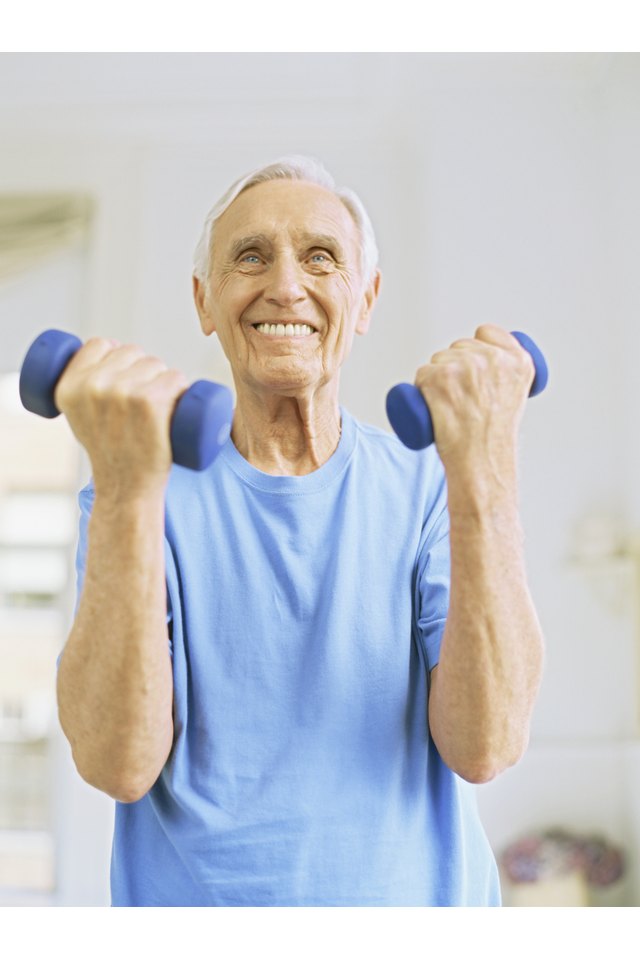What does fact checked mean?
At SportsRec, we strive to deliver objective content that is accurate and up-to-date. Our team periodically reviews articles in order to ensure content quality. The sources cited below consist of evidence from peer-reviewed journals, prominent medical organizations, academic associations, and government data.
- American College of Sports Medicine: Exercise and the Older Adult
- American College of Sports Medicine: Exercise and the Older Adult
- American College of Sports Medicine: Resistance Training and the Older Adult
- American College of Sports Medicine: Resistance Training and the Older Adult
The information contained on this site is for informational purposes only, and should not be used as a substitute for the advice of a professional health care provider. Please check with the appropriate physician regarding health questions and concerns. Although we strive to deliver accurate and up-to-date information, no guarantee to that effect is made.
How to Gain Muscle After 70

After the age of 70, muscle loss increases by 15 percent each decade. This progressive loss of muscle mass and strength can lead to falls, fractures and a loss of independence. Therefore, gaining muscle mass is important to keep you active and doing the physical activities you have always enjoyed. You can gain muscle by lifting weights and increasing your protein intake. Talk with your doctor before starting a weight-training program to assess any risks.
Get Your Blood Flowing
Before lifting weights, begin with a warm-up. A warm-up will help bring blood to your working muscles and reduce your risk of injury. Perform five to 10 minutes of light aerobic exercise, such as walking or biking. After five to 10 minutes, transition to the first weight-training exercise you are going to perform but do it with a lighter weight to finish up your warm-up. For example, if you are going to train legs on the leg press, first do a warm-up set using lighter weight than you would usually use.
Pump Some Iron
For adults 65 and over looking to build muscle, the American College of Sports Medicine recommends lifting weights two to four times a week for 30 minutes each time. Do one to two exercises for each major muscle group. The major muscle groups include: chest, shoulders, arms, back, abdominals and legs. Allow at least 48 hours between training sessions to make sure your muscles have recovered from the previous workout.
Basic Exercises
Free weights, like dumbbells or barbells, require more balance and coordination, so if you're new to working out stick to machines, which support you and encourage good form. Use the chest press to train your chest, the shoulder press to work your shoulders and the leg press to strengthen your legs. The seated lat pulldown works your back muscles and standard floor situps target your abdominals. Finally, use the bicep and tricep machines to exercise the front and back of your arms. Similar exercises can be done with free weights, once you've built up some strength, stamina and balance.
Challenge Yourself
It is important to gradually increase the weight you lift to gain muscle. Start out with a weight heavy enough that you can perform 10 repetitions but no more than 12. Continue using that weight until you are strong enough to lift it 12 to 15 times. Add more weight so that, again, you can only perform 10 to 12 repetitions. Once you can lift it 12 to 15 times, add more weight.
Increase Protein Intake
Protein helps build and repair your muscles. For older adults, protein intake becomes especially important. In fact, older adults require more protein than younger individuals to build muscle and prevent muscle breakdown. A 2015 study published in the American Journal of Physiology found that older adults who consumed double the U.S. recommendations for daily dietary protein had greater muscle growth. Aim for 0.68 grams of protein per pound of body weight a day. For example, a 160-pound person would need 160 x 0.68 = 108 grams of protein a day. Lean meats, such as turkey and chicken, or dairy products, like milk, cottage cheese and Greek yogurt, are high sources of protein. Other sources of protein include nuts and beans.
References
- American College of Sports Medicine: Exercise and the Older Adult
- American College of Sports Medicine: Resistance Training and the Older Adult
- American Journal of Physiology: Endocrinology and Metabolism: Quantity of dietary protein intake, but not pattern of intake, affects net protein balance primarily through differences in protein synthesis in older adults
Writer Bio
Gavin Van De Walle specializes in nutrition and fitness and co-owns the sports nutrition supplement company, Supra Nutrition. Van De Walle earned a Bachelor of Science degree in nutrition and food science from South Dakota State University, and is a certified personal trainer.
